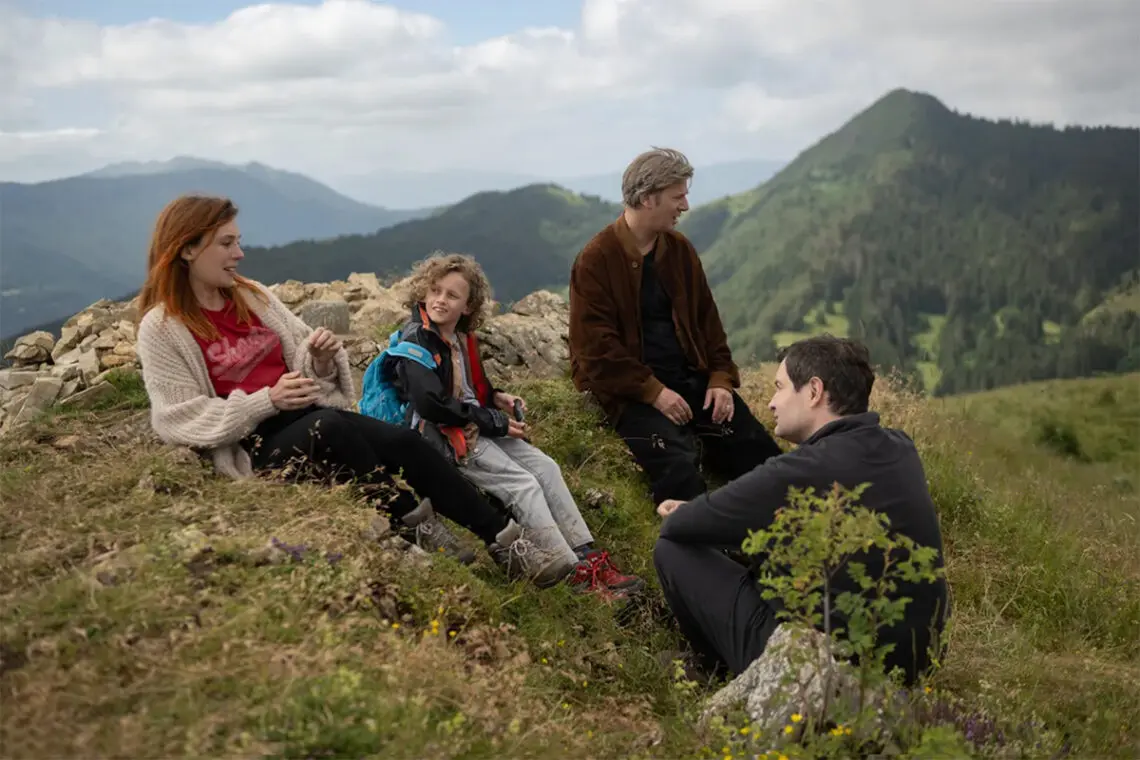A closer look at “Jim’s Story”: A tale woven through passive eyes
The paradox of the protagonist
Arnaud and Jean-Marie Larrieu’s film, Jim’s Story, intriguingly revolves around Aymeric (Karim Leklou), not the titular Jim. In a curious narrative choice, the film’s entire plot unfolds through Aymeric’s passive perspective, allowing Jim’s existence to shape much of the storyline. This deviation from the standard narrative structure prompts a fascinating examination of how Aymeric’s inertia impacts the tale.
The inception of Jim’s journey
Spanning decades, Jim’s Story starts before Jim’s birth. His mother Florence (Laetitia Dosch) reconnects with Aymeric, a former colleague who has recently been released from prison. Unlike the biological father of Florence’s unborn child, who remains an indifferent and married man, Aymeric is depicted as kind-hearted but somewhat adrift due to his youthful indiscretions.
Florence, pregnant and vulnerable, finds solace in Aymeric’s calm demeanor, prompting them to cohabit and raise Jim in her mother’s rural house in the Jura mountains. Here, the film begins to paint an idyllic yet deceptive portrait of domestic life.
Aymeric’s impassive existence
Aymeric’s passivity is a central theme in the Larrieu brothers’ storytelling. His life unravels through events that he neither initiates nor resists, casting a mild and often bemused expression toward the world’s chaos. When Florence decides to move to Canada with Jim and his biological father, Aymeric’s reaction is predictably passive. He neither protests nor fights for his place, embodying a character who allows life to simply happen to him.
Visual storytelling through photography
Aymeric’s affinity for photography underscores this passivity, presenting him as more of an observer than an active participant in life. The film is punctuated with shots of negatives, symbolizing Aymeric’s way of seeing the world—capturing moments without engaging deeply with them.
Despite the emotional and narrative gaps these snapshots reveal, they provide poignant insights into Aymeric’s character. This clever use of visual elements ties into the broader narrative, highlighting his relationship with Jim and the life he once tried to construct.
Motherhood and familial complexities
Florence, portrayed with nuance by Dosch, injects vibrancy and complexity into the story. Her interactions and decisions drive much of the narrative, challenging traditional depictions of family dynamics. Her willingness to embrace Aymeric despite his troubled past and her ultimate choice to pursue a fresh start in Canada reflect broader societal themes.
Florence’s character compellingly contrasts Aymeric’s passivity, inviting audiences to reflect on the sacrifices and decisions that often define motherhood and familial bonds.
Emotional detachment and narrative impact
As the film progresses, Aymeric’s lack of decisive action becomes increasingly problematic. This emotional detachment creates a distancing effect, preventing the audience from fully connecting with the protagonist. The film navigates through pivotal moments in Aymeric’s life with a novel-like pacing that sometimes feels disconnected due to his passive nature.
Exploring alternative family narratives
Jim’s Story ventures into uncharted territory, exploring what constitutes a “normal” family. Florence and Aymeric’s relationship, coupled with the arrival of Olivia (Sara Giraudeau), presents varied perspectives on familial bonds and life’s unpredictable paths. Dialogues between these characters offer insightful critiques and rebukes of conventional family structures, more commonly seen in traditional melodramas.
The weight of inaction
The film culminates in a sentimental climax that brings to light long-hidden family secrets and misunderstandings. Yet, the emotional impact remains muted due to Aymeric’s persistent detachment. The reconciliations and revelations, although touching in a maudlin melodrama fashion, lack the visceral punch provided by more engaging protagonists.
A novel approach to cinema
Ultimately, Jim’s Story is an exploration of human passivity and familial connections. Its unique narrative approach highlights Aymeric’s journey without the typical protagonist’s assertiveness. This deviation challenges viewers to reconsider the traditional roles characters play in shaping stories.
Jim’s Story might not resonate deeply with all audiences, but its thought-provoking take on life through a passive lens makes it a memorable piece of cinema. For those interested in films that break from narrative conventions and provide a reflective glimpse into the human condition, this French drama is an intriguing watch.
Stay connected for more analysis and dive into unique storytelling perspectives. Share your thoughts on social media and follow us for further updates on cinematic explorations.

 Italian
Italian







